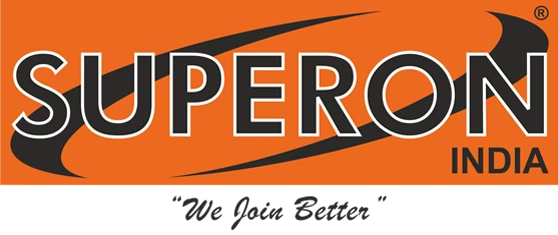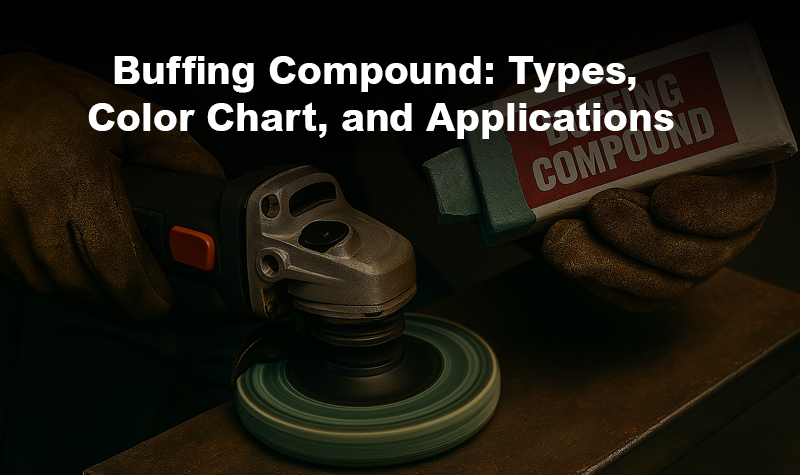Getting a perfect, glossy finish on all types of substrates—metals, plastics, or wood—requires the right tools and techniques. Buffing compounds are one key component in the finishing process. Buffing compounds are abrasives designed to remove imperfections, provide shine, and produce desired finishes. Choosing the right buffing compound will yield the best possible results on metals, plastics, or wood.
What Is a Buffing Compound?
Buffing compounds consist of polishing powder joined with lipids and waxes which create either a bar-shaped or a cake-shaped abrasive material. These industrial compounds provide cleaning functionality and a polished appearance to metal surfaces for multiple manufacturing sectors while enhancing the capability of the wheels.
Types of Buffing Compounds
Buffing compounds can be made in many different combinations and formulations based on applications and substrates. Knowing the types of compounds and their intended applications will ensure effective results when refinishing surfaces.
Cutting Compounds
Cutting compounds are the most aggressive of alloys and are coarse to have the ability to remove material. Cutting compounds remove deep scratches, oxidation, and imperfections, and the surface prepares for polishing even finer materials.
- Black Emery Compound stands as the strongly abrasive buffing substance for demanding applications which involve deep scratch removal and pit repair and complete stripping of paint or lacquer layers. Black Emery Compound serves metals best if they are steel or iron.
- The natural abrasive origin of Brown Tripoli Compound allows users to polish brass along with copper and aluminum materials in addition to aluminum. This substance generates high gloss and finds mid-level polishing applications.
Polishing Compounds
These compounds provide refined surface treatment when put on top of previously used cutting compounds due to their less abrasive nature.
- Greystar Compound provides convenient performance between intense edge cutting operations and delicate material finishing which makes it suitable for many different types of metal surfaces. This material successfully removes both scratches of medium severity and minor blemishes.
- White Rouge Compound functions as a fine abrasive that produces exceptional mirror reflections. The final stage that uses white rouge compound delivers results specifically on soft metal items including gold and silver.
Finishing Compounds
The final category of compounds brings the lowest abrasions for delivering top-notch gloss finish performance on surfaces.
- Green Rouge Compound serves users who require precise polishing for gemstones and plastic materials. English rouge has fine abrasive grains which help users get a perfect gloss finish on delicate materials without endangering delicate features.
- Jewelers extensively use Red Rouge Compound to receive the highest quality polish on precious materials such as gold silver and additional metals.
Buffing Compound Color Chart
| Color | Application | Suitable Materials |
|---|---|---|
| Black | Heavy cutting and scratch removal | Steel, Iron |
| Brown | Polishing and shining | Brass, Copper, Aluminum |
| Grey | Removal of fire scale, brings good color | Stainless Steel |
| White | Final polishing to achieve a mirror finish | Stainless Steel, Aluminum |
| Green | Mirror-like finishing | Stainless Steel, Chrome |
| Red | High-luster finish for precious metals | Gold, Silver |
| Blue | Final finish on soft metals and plastics | Aluminum, Brass, Copper, Plastics |
| Pink | High polishing of chrome, nickel, and other hard metals | Chrome, Nickel |
| Yellow | Provides a high-luster shining finish | Gold, Platinum |
| Gold | High-luster finish for polished metals | Gold, Other Polished Metals |
Most Common Buffing Compounds and Their Applications
The applicability of yellow, blue, and aluminum metal polishing compounds stands uniquely as separate from other flexible and multipurpose compounds. Stainless steel surfaces require use of either green or white buffing compounds for buffing operations. The following list specifies every buffing compound together with their intended applications.
Black Emery Compound
The Black compound contains emery minerals for achieving advanced level surface cuts. The compound serves as a superior buffing agent that efficiently removes scratches together with small pits, plating, paint, antiquing, lacquer and more from metallic surfaces. Hours of work along with substantial effort will be eliminated through its application.
Black emery compound suits big tasks because of its effective usage. Black emery compound performs a deep scratch removal operation which also provides acceptable metal surface shine.
Grey Star Buffing Compound
The Greystar compound functions effectively for buffing most types of tasks. The compound offers a superb metal-cut which results in excellent coloring effects. The abrasive structure of Greystar compound presents a fine material with medium-grade consistency. Anyone who needs precise fire scale elimination should use this compound because of its good speed and accuracy. Stainless steel metal requires the strictest buffing wheel when using this compound.
Brown Tripoli
The brown Tripoli buffing compound serves users in many different applications. The compound serves as a common solution for polishing surfaces from brass, copper and aluminum metals. The compound allows wood treatment and produces an attractive glossy result.
White Rouge
The refined substance composition of white polishing compounds indicates their suitability for hard metals and stainless steel during the polishing process at cutting and intermediate stages.
Green Rouge
The finishing process of stainless steel surfaces requires the green metal polishing compound as an optimal solution. Stainless steel compound goes by an occasional name while serving as a stainless steel finishing product. White rouge works to protect surfaces from scratches and produces reflective mirror outcomes.
Blue Rouge
The blue compound provides both finishing restoration of the original smooth surface and reflects the sparkle on non-ferrous metals and synthetic materials and plastic surfaces.
Pink Rouge
The pink compound serves two functions as it finishes soft metal polishing during the early stages and completes hard metal polishing in later stages. The rouge compound successfully buffishes a wide range of materials that include wooden surfaces and painted walls along with plastic materials. Pink rouge stands out because it offers the highest flexibility among buffing compounds.
Black Rouge
Black polishing compound functions with minimal amounts to generate shine on steel, aluminum along with copper, brass, and comparable metal surfaces. To handle deep scratches along with rough surfaces the black emery compound proves to be the most suitable choice.
Aluminum Buffing Compound
Aluminum buffing agents enable the creation of a smooth texture on soft metal surfaces.
Yellow Rouge
Because of its low-residual nature the dry polishing compound delivers outstanding shine to jewelry metals like platinum and gold so jewelers frequently use it.
Gold Polishing Compound
The abrasiveness of gold polishing compounds exists in multiple grades. The gold compound produces superior metallic luster in polished metals because of which it makes a perfect choice for jewelers and metalworkers.
Factors To Consider While Selecting Buffing Compounds
Multiple crucial elements exist for picking buffing compounds which should be taken into account.
Material type
A buffing compound selection starts with the identification of the material type which will be used. You should begin with abrasive compounds of high grit value when polishing durable materials including stainless steel and metal and move towards lower grit compounds. Copper and brass along with similar soft materials require the use of fine abrasive compounds during operations.
Degree of surface damage
The required buffing substance depends directly on how severely the surface has been damaged. Surface removal of deep scratches needs a compound which has higher grit size. Polishing a minor surface scratch needs using a compound with higher refining capability.
Cost
The expense should be a key element to consider when selecting abrasive compounds. The market presents diverse buffing compounds which price at different levels depending on the particular job requirements and material types as well as brand and other factors. Most abrasive compounds carry affordable pricing although certain unique or specialized abrasive compounds tend to be expensive. The selection process of buffing compounds heavily depends on cost factors. The process of better comprehension requires ongoing comparison of product durability and pricing.
Intended outcome
Property owners can determine buffing compounds according to their intended project results. Finer abrasive compounds will produce a finish similar to a mirror surface. To achieve a matte appearance you should utilize coarser abrasives. Full mastery of the outcome depends on your choice of buffing technique and speed.
Conclusion
Smooth polished surfaces of multiple materials rely on buffing compounds for their production. A complete understanding of compound types and their color indicator system along with their intended applications helps you pick the ideal material for reaching optimal polishing outcomes.

